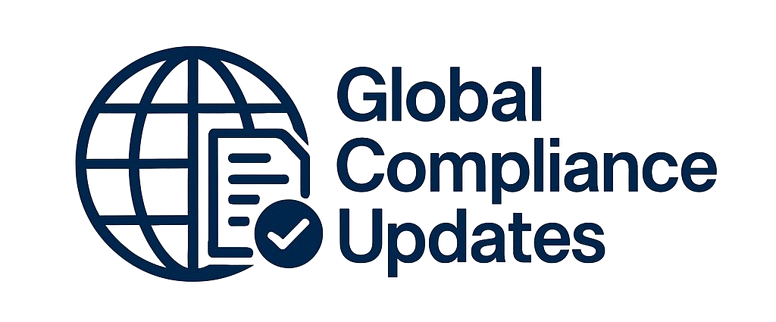Process of following the procedures and processes that are agreed on during a selection audit process. It identifies nonconformances in the manufacturing process, engineering change process, invoicing process, quality process, and also the supplier/shipment process. Supplier audits are analyses that are done to document the relationship between different companies to verify compliance with a supplier’s products and processes.
WHY SHOULD YOU ATTEND?
- Companies that need a supplier audit to verify their compliance with their supplier’s products or processes.
- Companies that need to improve their Return on Auditing (ROA).
- Companies that would want to manage their supply quality management system so that they can know that their suppliers comply.
- The companies that struggle with reallocating their resources such that they cannot keep current projects on schedule while their engineers are out in the field conducting supplier audits.
- Businesses need to conduct mutual and beneficial audits of their company and suppliers.
- Companies or businesses that would want to create an integrated auditing process aligned with internal goals and supplier commitments.
- Companies that require flexibility and consistently structured supplier audit services so that they can execute a value-adding audit program.
LEARNING OBJECTIVES
- Implementation of an overall quality system.
- Establishment of documentation control.
- Control of business records is achieved.
- Establishment of customer satisfaction.
- The control of company or business operations is achieved.
- Implementation of a business management review is established.
- Non-conforming product control will be done through the supplier audit
- The supplier audit will help in calibration control and contract review.
- Information and product improvements can be shared for common gain among suppliers and companies.
- Accomplishments of supplier measurement that can take place, risk mitigation exercises both proactive and reactive.
- When there is an existing stand-alone supplier quality management function, strong relationships with suppliers can be created from a customer’s perspective.
- Knowledge can be integrated with the deliverance of profit-generating opportunities for both organizations and the exploration of additional, above and beyond contrasting business opportunities. This can be achieved through the creation of a supplier quality management function for all those involved such as account managers, supply chain consultants, and supplier performance managers.
- Ensure customers will have complete confidence that the company’s products and services will always meet or exceed their needs and expectations.
WHO WILL BENEFIT?
- Site Quality Operations Managers
- Quality Assurance personnel
- Plant Managers and Supervisors
- Manufacturing Superintendents and Managers
- Regulatory Affairs Managers
- QC Lab staff
- Companies that need a supplier audit to verify their compliance with their supplier’s products or processes.
- Companies that need to improve their Return on Auditing (ROA).
- Companies that would want to manage their supply quality management system so that they can know that their suppliers comply.
- The companies that struggle with reallocating their resources such that they cannot keep current projects on schedule while their engineers are out in the field conducting supplier audits.
- Businesses need to conduct mutual and beneficial audits of their company and suppliers.
- Companies or businesses that would want to create an integrated auditing process aligned with internal goals and supplier commitments.
- Companies that require flexibility and consistently structured supplier audit services so that they can execute a value-adding audit program.
- Implementation of an overall quality system.
- Establishment of documentation control.
- Control of business records is achieved.
- Establishment of customer satisfaction.
- The control of company or business operations is achieved.
- Implementation of a business management review is established.
- Non-conforming product control will be done through the supplier audit
- The supplier audit will help in calibration control and contract review.
- Information and product improvements can be shared for common gain among suppliers and companies.
- Accomplishments of supplier measurement that can take place, risk mitigation exercises both proactive and reactive.
- When there is an existing stand-alone supplier quality management function, strong relationships with suppliers can be created from a customer’s perspective.
- Knowledge can be integrated with the deliverance of profit-generating opportunities for both organizations and the exploration of additional, above and beyond contrasting business opportunities. This can be achieved through the creation of a supplier quality management function for all those involved such as account managers, supply chain consultants, and supplier performance managers.
- Ensure customers will have complete confidence that the company’s products and services will always meet or exceed their needs and expectations.
- Site Quality Operations Managers
- Quality Assurance personnel
- Plant Managers and Supervisors
- Manufacturing Superintendents and Managers
- Regulatory Affairs Managers
- QC Lab staff
Speaker Profile
 Danielle DeLucy
Danielle DeLucy
Danielle DeLucy, MS, is owner of ASA Training and Consulting, LLC which provides Pharmaceutical and Biologics based companies with training and quality systems assistance in order to meet Regulatory compliance. Prior to this role, Danielle has been in the industry for 15 years serving in numerous Quality Management Roles, such as the Director of Product Quality, the oversight of Sterility Assurance practices and provided QA oversight of numerous filling and packaging operations. Danielle began her QA career as a Quality Control Pharmaceutical Microbiologist at a contract laboratory where she performed various tests for their clients. In the years after, she …
Upcoming Webinars

ChatGPT and Project Management: Leveraging AI for Project M…

Workplace Investigations 101: How to Conduct your Investiga…

Project Management for administrative professionals

The Monte Carlo Simulations in Excel for Risky Investments

Onboarding is NOT Orientation - How to Improve the New Empl…

Dealing With Difficult People: At Work & In Life

Transform Data into Insights: A Beginners Guide to Excel Pi…

Construction Lending And Real Credit Administration: Evalua…

Understanding Accounting for non - Accounting professionals

Harassment, Bullying, Gossip, Confrontational and Disruptiv…

New Form 1099 Reporting Requirements: 2025 Compliance Update

Human Error Reduction Techniques for Floor Supervisors

HR Metrics and Analytics 2025 - Update on Strategic Plannin…

Treating Employees Like Adults: Discipline versus Empowerme…

7 Ways To Beat Burnout: Without Quitting Your Job


How to Write Procedures to Avoid Human Errors

Handbook Overhaul 2026: Compliance, OBBB Act & Beyond

FDA Proposes Framework to Advance Credibility of AI Models

Ethical Terminations: Navigating Employee Exits with Legal …

Understanding EBITDA – Definition, Formula & Calculation

Project Management for Non-Project Managers - Scheduling yo…

4-Hour Virtual Seminar on Hidden Secrets of Selling & Marke…

Validation Statistics for Non-Statisticians

Data Integrity and Privacy: Compliance with 21 CFR Part 11,…


The Alphabet Soup: When the FMLA, ADA, COBRA, and Workers' …

Talent Management: How to Leverage AI and ChatGPT Tools for…


Offboarding with Care: Conducting Legal & Ethical Employee …

2-Hour Virtual Seminar on How to Conduct an Internal Harass…

Payments Fraud Detect & Prevent Check, ACH and P-Card Schem…

Managing Toxic & Other Employees Who have Attitude Issues



Reduce Stress in the Workplace: Effective Ways to Handle Co…





Excel - Pivot Tables - The Key To Modern Data Analysis and …
